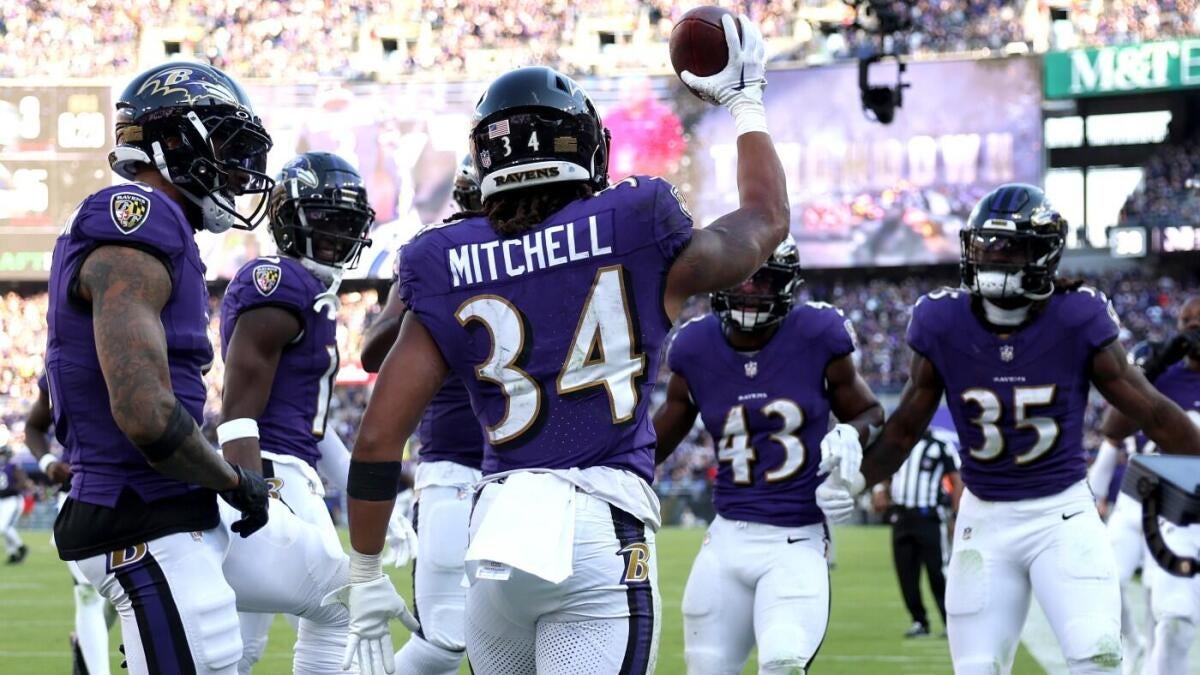The Crucible of Potential: Navigating Early Challenges in Young NFL Careers
The National Football League (NFL) is a realm of unparalleled pressure and physical demands, presenting unique challenges for its youngest players. Beyond the spotlight on draft picks and instant stars, a significant narrative revolves around those who face the treacherous waters of injury, early-career struggles, and the weight of expectation. Recent reporting highlights a recurring theme: the critical juncture faced by young NFL talent as they attempt to establish themselves, rebound from setbacks, and ultimately, fulfill their potential. This analysis will explore the multifaceted nature of these challenges, drawing from current news and observations within the league.
The Injury Epidemic: A Constant Threat
Injuries are arguably the most pervasive obstacle for young NFL players. The articles consistently point to this reality, from Christian McCaffrey’s Achilles injury potentially costing him the 2024 season, to the broader impact on players like Nolan Smith and others whose careers have been derailed. The physical toll of the game, combined with the accelerated pace of professional play, leaves young athletes particularly vulnerable.
The consequences extend beyond immediate playing time. As highlighted by the story of Motta and others with similar experiences, injuries can significantly impact financial security, particularly for players on less lucrative contracts. The case of Paddy Dow, a 25-year-old midfielder battling a serious knee infection, demonstrates that this isn’t limited to the NFL; the struggle for recovery and return to form is universal in professional sports. Furthermore, the long-term health implications, as evidenced by the increasing awareness of Chronic Traumatic Encephalopathy (C.T.E.) in players who began football at a young age, raise serious concerns about the cumulative effect of repeated head trauma. The tragic stories of players suffering mental health issues and dying before the age of 30, linked to C.T.E., underscore the gravity of this issue.
The Pressure to Perform: Expectations vs. Reality
The hype surrounding highly-touted draft picks often sets unrealistic expectations. Players like Ryan Leaf, Johnny Manziel, JaMarcus Russell, and Justin Blackmon serve as cautionary tales – examples of top prospects who failed to live up to the billing, often due to a combination of factors including injuries, poor performance, and off-field issues. Bryce Young’s difficult rookie season, marked by a 2-14 record and underwhelming statistics, exemplifies this pressure.
However, it’s not solely about top picks. Alec Pierce’s experience with the Indianapolis Colts illustrates the challenges faced even by players drafted later. He faced early criticism but maintained confidence in his abilities, ultimately demonstrating the importance of mental fortitude in overcoming initial setbacks. This highlights a crucial point: the ability to block out external noise and focus on self-improvement is paramount for young players navigating the early stages of their careers.
The Second-Year Surge: A Critical Turning Point
Many players don’t immediately shine as rookies. The articles emphasize the potential for a “breakout” in Year 2, citing examples like Jaxon Smith-Njigba and Peter Skoronski. This phenomenon suggests that the transition to the NFL is a complex process that requires time for adjustment, physical development, and a deeper understanding of the game.
The second year often represents a critical opportunity for players to build upon their rookie experience, refine their skills, and secure a more prominent role within their team. For some, like Darren Waller, overcoming previous injury struggles and regaining form is key to unlocking this potential. The ability to learn from mistakes, adapt to the demands of the league, and capitalize on increased opportunities can be the difference between a fleeting career and sustained success.
The Importance of Development and Opportunity
The Kansas City Chiefs’ focus on improving their offensive line, particularly at left tackle, and the need to nurture the development of first-round pick Rashee Rice (referred to as “Worthy” in one article) demonstrate the importance of organizational support in fostering young talent. Teams must prioritize not only identifying promising players but also providing them with the resources and coaching necessary to reach their full potential.
The 2025 NFL All-Rookie Team projections highlight the league’s ongoing search for instant-impact players. However, recognizing that development takes time and providing opportunities for young players to contribute, even in limited roles, is crucial for long-term success.
A Broader Perspective: The Human Cost
Alexandra’s essay offers a poignant reminder of the personal toll that sports injuries can take. Her experience ending a student-athlete career and causing lifelong pain, coupled with her anxieties about her own children participating in sports, adds a human dimension to the discussion. It underscores the need for a more holistic approach to player safety and well-being, one that prioritizes long-term health over short-term gains.
The Path Forward: Resilience and Realistic Expectations
The narratives surrounding young NFL players are often defined by adversity. Injuries, performance pressures, and the sheer complexity of the game create a challenging environment. However, the stories of players like Alec Pierce and those poised for a second-year surge demonstrate the power of resilience, mental fortitude, and the importance of organizational support.
Moving forward, a shift in perspective is needed. While the pursuit of instant gratification is inherent in professional sports, recognizing that development takes time and prioritizing player safety are essential. The NFL must continue to invest in research and implement policies that mitigate the risk of injury, while also fostering a culture that values long-term health and well-being. Ultimately, the success of young NFL players isn’t solely measured by statistics or accolades, but by their ability to navigate the crucible of potential and emerge as both accomplished athletes and healthy individuals.

